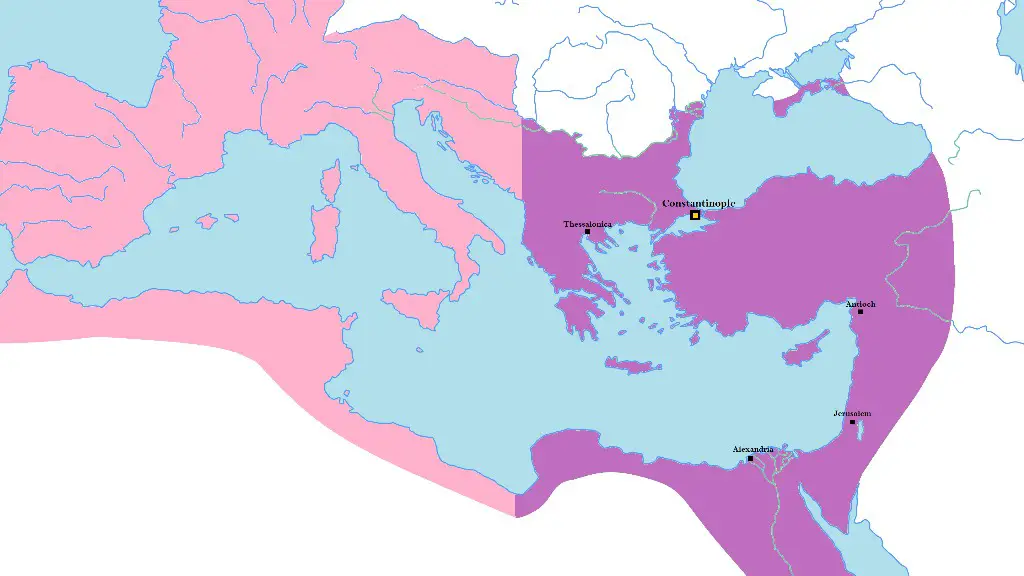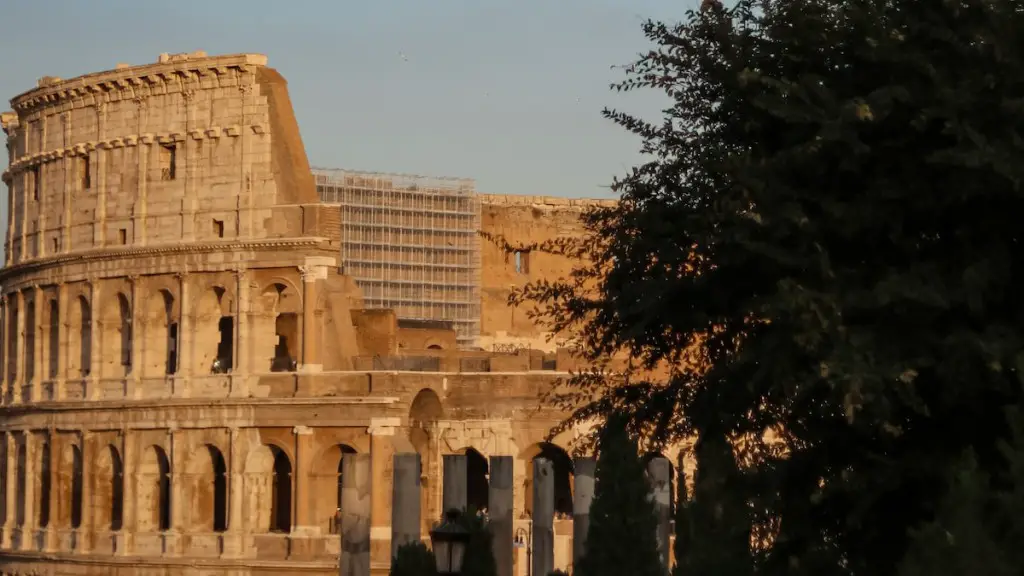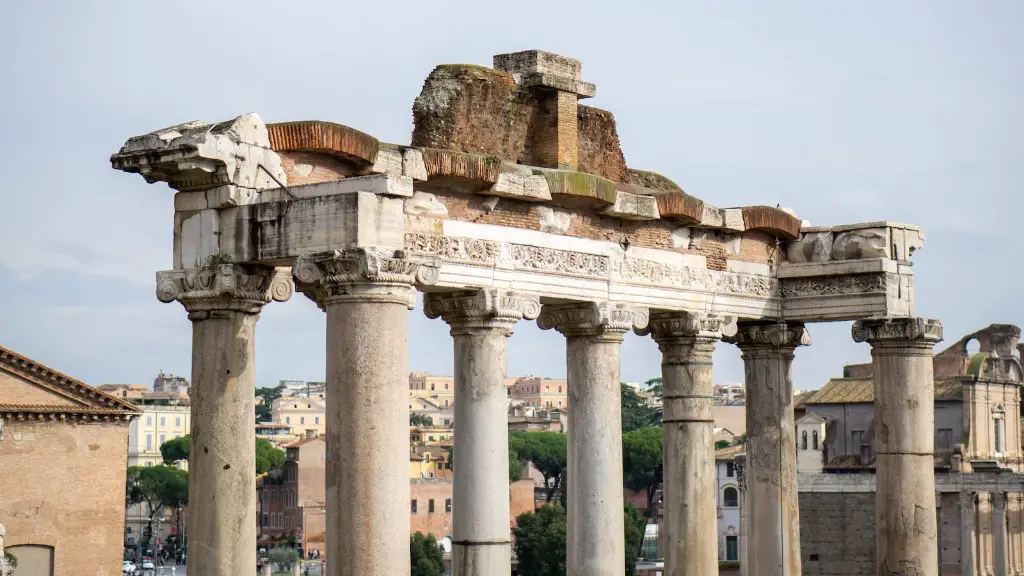Why did the Ancient Romans build Aqueducts?
The Roman civilization was one of the most powerful and advanced civilizations ever to exist – and their technology and engineering is among the most remarkable testament of this. Among their most famous works is the Aqueducts – the complex network of bridges and channels used to bring water to the major cities of the Roman Empire. But why would a society prioritize ensuring that its citizens had access to clean drinking water to such an extent? It’s clear that there are numerous reasons why the Ancient Romans chose to build Aqua ducts to bring water from miles away.
First, Ancient Rome was a city of major population growth. Roman cities, especially Rome itself, were busy hubs of people and buildings that were gradually expanding. With the population growing exponentially, it was essential for the Roman Empire to plan for effective water supply for the entire city. Acqueducts allowed for a supply of safe, clean water to be distributed to the whole city without depending on local resources.
Second, the Roman economy was based on cities that were built on hills and valleys, which meant that the aqueducts helped alleviate the pressure of local resources because water could be transported by gravity. This also increased productivity by enabling cities to irrigate and farm in areas that didn’t have enough water. In areas where the terrain wasn’t giving them enough support, the aqueducts could transport water wherever they needed it.
Third, aqueducts provided a unique form of public cleanliness that was often disregarded in those times. Using the aqueducts, Romans could transport relatively clean water to their homes, which was difficult and cost-prohibitive to obtain before. All of this made for a higher quality of life for Roman citizens and increasing the Roman Empire’s power and legacy.
Finally, the stability of aqueducts and the fact that they were impossible to destroy by siege ensured that the Roman Empire could supply its cities and its citizens with essential water, even in times of war. This allowed the Roman Empire to remain a powerful force even when facing exterior pressure, helping it to rise to such heights of greatness.
Advancements in Aqueducts Construction
The Ancient Romans were ingenious engineers in building and sustaining the Aqueduct network. They used a combination of advanced mathematics, geometry and ingenious engineering to create the sophisticated channels that brought water to the city. Their engineering prowess enabled them to build aqueducts with incredible sturdiness, as well as regulating the water flow to minimize contamination.
Bridges and elevated structures were used to cross rivers, while inverted siphons and underground pipelines allowed easy transport of fresh water over a long distance. To ensure the balance between water quantity and quality, Romans constructed and maintained sophisticated filters to ensure that the cleanest water was used. This attention to detail was unparalleled in the Ancient world and one of the reasons why the Aqueducts network remained in use for centuries after.
On top of that, the Aqueducts were also made with a high level of architectural style, something that was usually rarely seen on utilitarian structures. Although most of the remaining Aqueducts are ruins, the flying arches and columns of the structure can still be admired and provide a testament of the ingenuity of the Ancient Roman engineers.
Aqueducts in the Modern Era
Today, Aqueducts are still used in many parts of the world and have seen several advancements due to the development of engineering. The Ancient Roman system was one of the earliest and most advanced examples, and modern Aqueduct systems continue to be inspired by it. In addition, Aqueducts has become a reliable source of energy, with many modern aqueducts used to transport water for hydropower. Many aqueducts have been adapted to increase efficiency and sustainability, making them an even more powerful resource.
Modern aqueducts are also more reliable and efficient, allowing for easier maintenance and sustainability. Comparable modern engineering philosophies and approaches to design and construction, such as water-smart solutions and watershed planning, have provided a good foundation for aqueducts to remain a reliable and efficient resource for urban populations.
At the same time, aqueducts remain a huge challenge to engineers, particularly when taking into account the changing climate. Aqueducts are vulnerable to droughts, floods and other weather-related events, and engineers are constantly looking for ways to make them more resilient and reliable.
Impact of Aqueducts on Society
Aqueducts have had an immense impact on society, both in the Ancient world and in modern times. Today, access to clean water is a human right and aqueducts around the world have helped ensure access to clean water for millions of people. Aqueducts also provide sanitation and hygiene, two essential aspects for healthy communities.
In addition, aqueducts are essential for agriculture and food production. Without reliable access to clean water, farming and other related activities would not be possible. Aqueducts also provide recreational and leisure opportunities. In many parts of the world, aqueducts are used as public parks and trails, providing safe and enjoyable spaces.
Aqueducts are an essential part of human civilization, with their impact still being felt today. The ancient Romans had the ingenuity and foresight to build these marvels, and it is thanks to their engineering genius that societies around the world have benefitted from their advances centuries later.
Environmental Impact of Aqueducts
Aqueducts can be hugely beneficial to the environment, helping to regulate and manage water resources by providing access to clean water. Aqueducts also help protect valuable ecosystems and species by providing a sustainable source of water for agricultural and other activities.
However, Aqueducts can also cause environmental damage if taken too far or if not managed properly. In some cases, overextraction of water from aqueducts can damage local ecosystems or deplete local water sources, particularly when combined with inappropriate water use.
As such, it’s essential that aqueducts are managed and regulated responsibly. Wise water management and use are essential, with responsible practices in place to ensure that the environment is not threatened by the use of aqueducts.
Conclusion
Ancient Romans played an important role, both in creating and managing aqueducts construction, operation and maintenance. Their system of aqueducts still stands as a strong testament to their engineering genius and their dedication to creating a better and healthier life for their citizens. Aqueducts have had a huge impact on society, providing clean water, sanitation, leisure and more. The importance of these structures must be remembered and their legacy respected.




